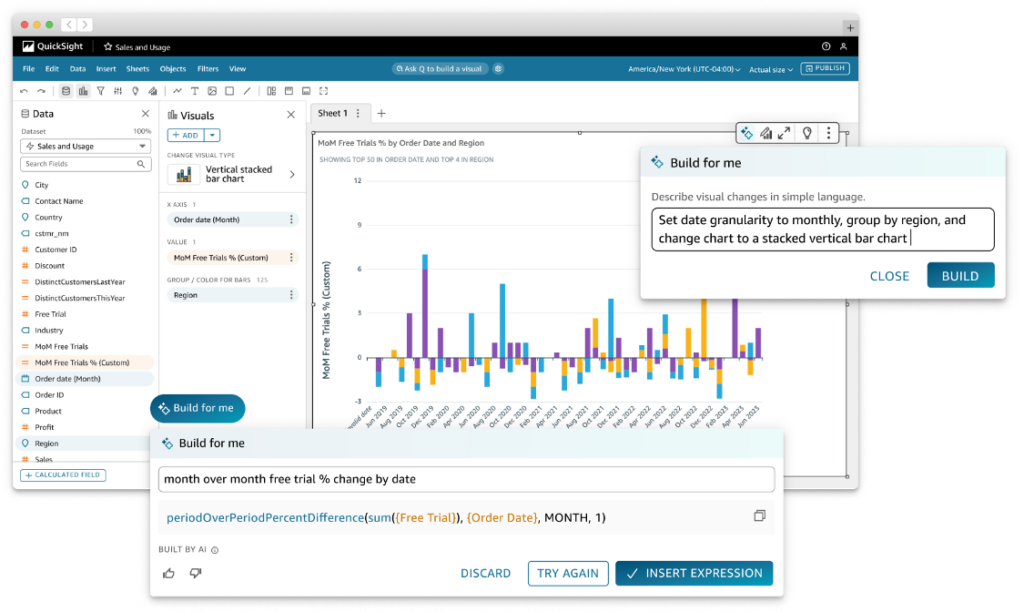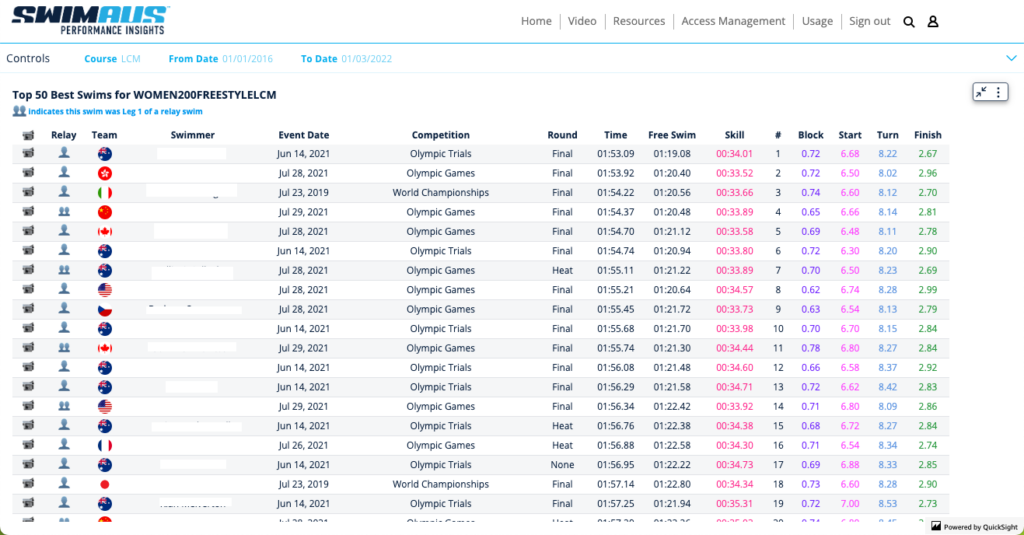Topic Breakdown
Introduction: Generative AI and Machine Learning in Swimming Australia
Generative AI and Machine Learning in Swimming Australia are revolutionising how the nation’s top swimmers train and compete. Australia is a sports-mad nation, where athletic achievements are celebrated across the country. Families make immense sacrifices to support their children’s involvement in sports, often dedicating weekends to travel, training, and competitions. Swimming, in particular, holds a special place in the hearts of Australians, with the nation consistently producing world-class swimmers who dominate on the global stage.
In recent years, Swimming Australia has taken a groundbreaking approach to maintain and enhance this legacy. By integrating Generative AI and Machine Learning into their training and performance analysis, they have developed a state-of-the-art system known as “Lane 4.” This system is helping Australian swimmers achieve their full potential and stay ahead of the competition.
In this blog post, we’ll explore how Generative AI and Machine Learning in Swimming Australia are optimising athlete performance and securing gold medals.
A Personal Experience: Witnessing the Power of “Lane 4” in the Paris 2024 Olympics
Earlier this year, I had the opportunity to attend the AWS Summit in Sydney, where I listened to a talk by Jess Caronis, the General Manager of Performance Support at Swimming Australia. During her presentation, she spoke passionately about the capabilities of Generative AI and Machine Learning in Swimming Australia, particularly through the “Lane 4” system. But it was during the 4 x 100m Mixed Medley relay semi-finals in the Paris 2024 Olympics last night that I truly saw its power in action.
Australia was up against some of the best swimmers in the world, and the AI was put to the test in selecting the optimal relay team. After the second swimmer finished, Australia found themselves nearly six seconds behind the leading team and on the brink of not qualifying for the finals. Despite the odds, the team trusted the data-driven insights provided by “Lane 4.”
With the pressure on, Kyle Chalmers, one of Australia’s star swimmers, took the anchor leg. Relying on the AI’s analysis and strategy, he executed a perfect swim, pulling Australia from behind to finish first, a full two seconds ahead of the next closest competitor. It was a thrilling moment that showcased not just the skill of the swimmers but the incredible impact of Generative AI and Machine Learning in Swimming Australia.
The Role of Technology in Modern Sports
Generative AI and Machine Learning in Swimming Australia demonstrate the increasing role of technology in modern sports. Sports have always been about pushing the limits of human performance, and technology has increasingly become a vital part of that process. Whether it’s through the use of advanced equipment, data analysis, or cutting-edge training techniques, technology helps athletes train smarter and compete at their best.
Swimming Australia has embraced this trend by leveraging Generative AI and Machine Learning to gain insights that were previously unimaginable. Their system, “Lane 4,” is a perfect example of how modern technology can be harnessed to produce tangible results in sports.

Introducing “Lane 4”: Swimming Australia’s AI-Powered System

“Lane 4” is the name of the innovative system developed by Swimming Australia in collaboration with AWS (Amazon Web Services). This system uses Generative AI, Machine Learning, and AWS QuickSight to analyse vast amounts of data and provide actionable insights for coaches and athletes.
The system collects data from multiple sources, including race videos, training sessions, and even international competitors. By processing this data, “Lane 4” can offer detailed analyses of various aspects of performance, such as stroke efficiency, race pacing, and competitor strategies.
How “Lane 4” Transforms Data into Gold Medals
Race Analysis with Sparta
One of the core components of “Lane 4” is a custom-built race analysis system called Sparta. In the past, race annotations were done manually, a process that was time-consuming and prone to human error. With Sparta, however, Generative AI and Machine Learning in Swimming Australia handle these tasks, significantly speeding up the process and improving accuracy.
Sparta can track all eight swimmers in a race, measuring metrics like distance per stroke, stroke rate, and velocity. This detailed analysis helps coaches understand how each athlete is performing and where they can improve. Additionally, Sparta allows Swimming Australia to analyse the performance of international swimmers, giving them a competitive edge.
The Relay App: Strategic Team Selection
Another key innovation within “Lane 4” is the Relay App, a tool designed to optimise team selection for relay races. Contrary to what some might think, selecting a relay team isn’t just about picking the fastest swimmers. It involves a complex strategy that takes into account factors like the swimmer’s age, current form, and ability to perform relay changeovers.
The Relay App models different race scenarios, providing insights into potential team combinations and predicting the likely teams other countries might field. This strategic approach has paid off handsomely for Australia, with the country winning multiple relay medals at the 2021 Tokyo Olympics and the 2023 World Championships, thanks to the power of Generative AI and Machine Learning in Swimming Australia.
The Impact of AI and Machine Learning on Australian Swimming
The results speak for themselves. At the 2021 Tokyo Olympics, Swimming Australia enjoyed its most successful performance ever, winning nine gold medals. This success was further validated at the 2023 World Championships in Fukuoka, where Australia claimed 13 gold medals, solidifying its position as the top swimming nation in the world.
But the benefits of Generative AI and Machine Learning in Swimming Australia go beyond just medal counts. The system has fundamentally changed how coaches and athletes approach training and competition. By integrating data-driven insights into their routines, they can make more informed decisions, tailor training programs to individual needs, and ultimately, achieve better results.
The Future of Swimming Australia: Continuous Innovation
Despite the incredible success of “Lane 4,” Swimming Australia is not resting on its laurels. As Jess Coronis, General Manager of Performance Support and Olympic Campaign at Swimming Australia, pointed out, the system is a continuous work in progress. New technologies and insights are constantly being integrated to ensure that Australia stays ahead of the competition.
One of the latest projects is Training Insights, which aims to bring real-time analysis and generative AI directly into training pools. This initiative will help coaches monitor and adjust training sessions in real time, even in challenging environments where multiple swimmers are sharing lanes and performing different drills.
Looking ahead, Swimming Australia is already preparing for future Olympic Games in Los Angeles in 2028 and Brisbane in 2032. With an eye on long-term success, they are committed to using every technological tool at their disposal to maintain their dominance in the pool, continually advancing Generative AI and Machine Learning in Swimming Australia.
Australia’s Commitment to Sports Excellence
Australia’s passion for sports is deeply ingrained in its culture. From a young age, children are encouraged to participate in sports, with parents often making significant sacrifices to support their kids’ ambitions. Weekends are dedicated to training sessions, competitions, and long car rides to distant venues.
This commitment has helped Australia produce some of the world’s best athletes, particularly in swimming. The integration of cutting-edge technologies like Generative AI and Machine Learning into sports is a natural progression for a country that strives for excellence in every aspect of life.
Conclusion: A Model for Success
Generative AI and Machine Learning in Swimming Australia are a testament to the power of technology in sports. By developing the “Lane 4” system, they have set a new standard for how data and AI can be used to optimise performance and gain a competitive edge.
As we look to the future, it’s clear that AI will continue to play a crucial role in sports. For Australia, the challenge is not just to maintain its current success but to continue innovating and pushing the boundaries of what’s possible. With “Lane 4” and other AI-driven initiatives, Swimming Australia is well on its way to achieving that goal.
Whether you’re a sports enthusiast, a tech lover, or someone who simply enjoys watching athletes push the limits of human performance, there’s no denying the impact of Generative AI and Machine Learning in Swimming Australia. In the 2024 Paris Olympics, the Australian swimming team has won 13 medals so far, including 7 golds, 5 silvers, and 1 bronze—they sure are making waves.
Additional Resources and References
Want to know more about Generative AI?